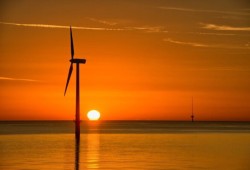Marine Species and Subsea cables report

The Crown Estate and the Centre for Environment, Fisheries, and Aquaculture Science (Cefas) have released a report which aims to help stakeholders involved in offshore wind developments better assess the impacts of electromagnetic fields (EMFs) from subsea power cables on the marine environment.
The report will lead to an improved understanding of the potential effects of EMFs – produced by power transmitted through subsea cables – on marine species, providing further evidence to facilitate and accelerate decisions in the planning and consenting of offshore wind developments.
It is the result of a two-day workshop, organised by Cefas and the Scottish government, which brought together 15 leading scientific minds on EMFs from across a variety of fields, including electrical engineers, oceanographers, (geo)physicists and biologists to share knowledge and set out priority actions to improve future processes.
The report ‘Electromagnetic Fields (EMFs) from subsea power cables in the natural marine environment’ can be downloaded here and includes:
- A summary of the aims and objectives from the workshop
- A breakdown of methods for calculating, modelling, and measuring EMFs emitted by subsea cables
- A summary of methodologies for measuring the impacts of EMFs on marine life
- Short and longer-term recommendations for how to improve and standardise research in this field to allow greater sharing of data and evidence
- Recommendations for future research in this field
The report provides insights that will feed directly into a follow-on project, funded by Offshore Wind Evidence and Change (OWEC), named ‘Floating Offshore Wind Environmental Response to Stressors (FLOWERS)’, which will build understanding of EMFs as an environmental stressor associated with floating offshore wind.
In total, four Cefas-led projects have been funded by OWEC, in a bid to build understanding of the interaction between offshore wind infrastructure and marine species. In addition to the EMF workshop, three further projects are currently underway:
- Nature Inclusive Cable Enhancement and protection (NICE) – making infrastructurework for biodiversity.
- Fisheries Sensitivity Mapping and Displacement Modelling (FiSMaDiM) –understanding how offshore wind development impacts fisheries.
- Floating Offshore Wind Environmental Response to Stressors (FLOWERS) -understanding little known environmental impacts of floating wind.
News coverage can be read at 4Coffshore, ReNews and OffshoreEnergyBiz. Further informarion on the Cefas/Crown Estate report of impacts of electromagnetic fields from subsea power cables on the marine environment can be read here.